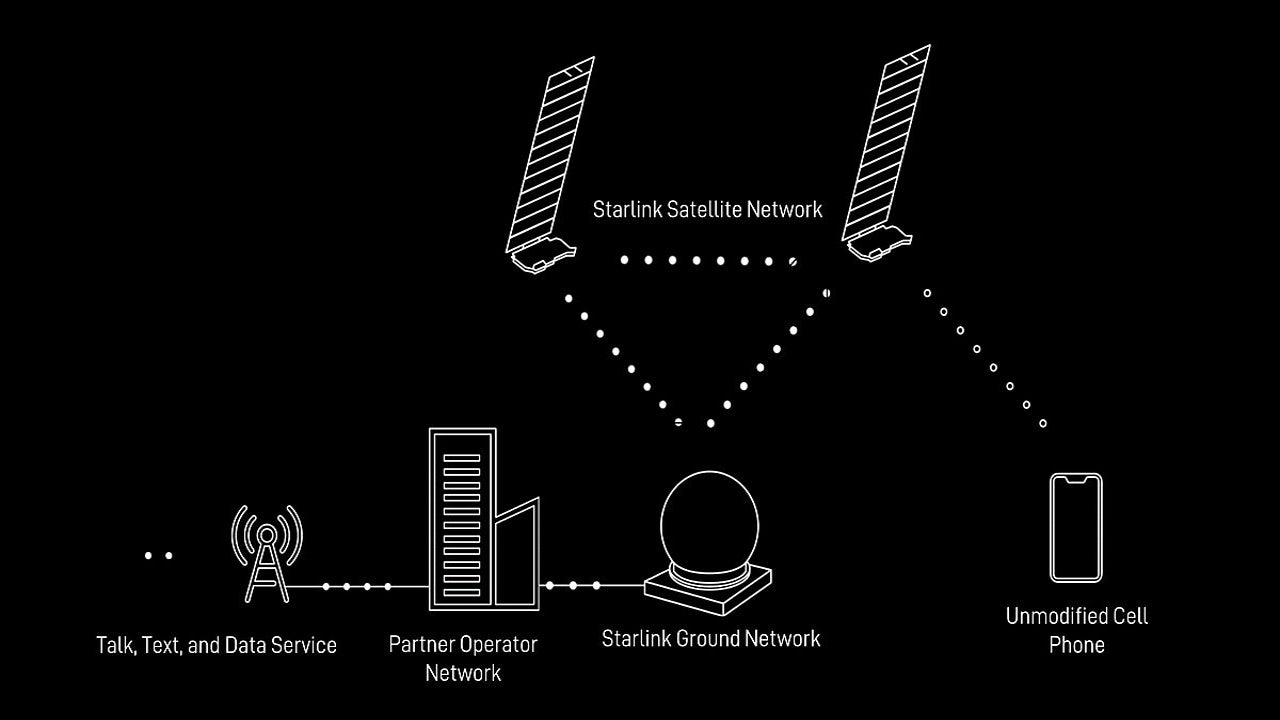News
Starlink Direct to Cell is coming to change everything

- October 12, 2023
- Updated: July 2, 2025 at 12:59 AM

Starlink Direct to Cell was announced today. Imagine a world where you can send text messages from the most remote corners of the Earth, make calls when conventional networks fail, and connect every device in your life seamlessly. This future isn’t light-years away; it’s as close as 2024.
SpaceX’s audacious Starlink project is on the verge of transforming our global communication landscape, and who is the star of the show? “Starlink Direct to Cell”
Starlink Direct to Cell: A cellphone tower in space
Starlink Direct to Cell is a groundbreaking initiative within SpaceX‘s Starlink project that aims to enhance global connectivity by providing a direct and robust link between satellites and cellular devices.

The primary goal of this technology is to bridge communication gaps, particularly in remote and underserved areas where traditional cellular networks might be unreliable or nonexistent.
The key features and components of Starlink Direct to Cell include:
- Text Messaging (2024): Starlink Direct to Cell is set to introduce text messaging capabilities in 2024. This means that users will be able to send and receive text messages using their cellphones, even in areas with limited or no terrestrial cellular coverage.
- Voice, Data, and IoT Services (2025): In addition to text messaging, Starlink Direct to Cell plans to expand its services to include voice calls, data connectivity, and support for Internet of Things (IoT) devices by 2025. This comprehensive approach will provide users with a full spectrum of communication options.
- Onboard eNodeB Modem: Starlink satellites equipped with direct-to-cell capabilities feature an onboard eNodeB modem. This modem effectively acts as a “cellphone tower in space,” facilitating seamless network integration and communication with cellular devices. This technology is crucial for establishing reliable connections.
- Global Satellite Constellation: Starlink’s vast constellation of satellites is a cornerstone of this initiative. These satellites are strategically positioned in low Earth orbit, ensuring that they can cover a wide geographical area and connect with cellular devices virtually anywhere on the planet.
- Laser Backhaul Technology: Once in orbit, the direct-to-cell satellites connect to the broader Starlink constellation using laser backhaul technology. This enables swift and efficient data transfer, ensuring global connectivity.
- IoT Integration: Starlink Direct to Cell’s support for IoT devices is a significant part of the service. IoT devices will be seamlessly integrated, allowing them to communicate through common LTE standards. This opens up possibilities for a wide range of applications, from smart agriculture to remote environmental monitoring.
- Strategic Partnerships: Starlink has partnered with major cellular providers, such as T-Mobile, Rogers, Optus, One NZ, KDDI, and Salt, to leverage their expertise and networks. These partnerships will enable the expansion of direct-to-cell services to diverse regions around the world.
In essence, Starlink Direct to Cell is a revolutionary concept that envisions a future where geographical limitations do not bind connectivity. It promises to improve global communication by ensuring that even the most remote areas have access to reliable text messaging, voice calls, data, and IoT connectivity, all through a network of advanced satellites.
Meet Eray, a tech enthusiast passionate about AI, crypto, gaming, and more. Eray is always looking into new developments, exploring unique topics, and keeping up with the latest trends in the industry.
Latest from Eray Eliaçık
You may also like
 News
NewsThe first actress created by AI has arrived to revolutionize Hollywood
Read more
 News
NewsThe most iconic player of 'Skyrim' quits the controls forever out of pure boredom
Read more
 News
NewsGeorge Clooney returns to Netflix with one of the best movies of the season
Read more
 News
NewsThe creators of 'Slow Horses' already have a new series, and its trailer is spectacular
Read more
 Article
Article'The Social Network' will return, but without one of its best actors
Read more
 News
News'One Piece' is taking a break… But Luffy and his nakamas already have a return date
Read more